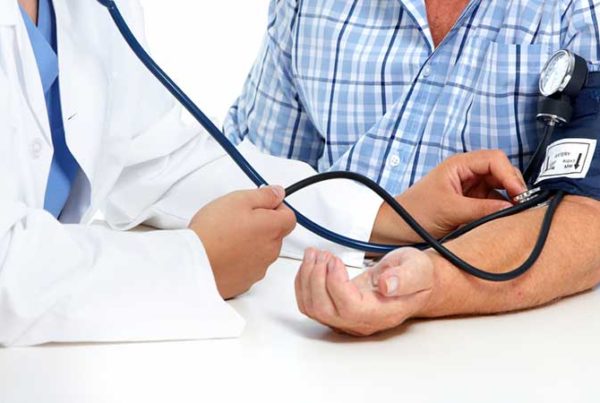
New terms ‘polypharmacy’ and ‘deprescribing’ follow concerns about the dramatic rise in prescription and over-the-counter drug use.
We live in one of the most unhealthy and overmedicated societies in the world.
Nearly 70 percent of Americans are on at least one prescription drug, and more than half take at least two prescriptions. Twenty percent of U.S. patients have five or more prescriptions. There are also too many patients taking eight, 10, 15, 20 or more prescription meds (read my article about Johnny Cash who, when I first consulted with him, was taking 40 prescription meds).
Without a doubt, drug use is a big theme of our society. The largest and most serious problems occur with prescription and over-the-counter (OTC) medications — their use far outpaces alcohol, heroin, cocaine and marijuana combined.
A recent issue of the Journal of the American Medical Association (JAMA) Internal Medicine (2015;175(5):827-834) says that, “over-prescription of drugs is being increasingly recognized today as ‘inappropriate’ and ‘unnecessary’ by the medical community.”
There are conditions when specific legal drugs are necessary, but it appears we have gone well beyond this level. What’s more, the real danger is the simultaneous use of multiple medications.
The problem is called polypharmacy, the practice of prescribing many medications to a single patient — in particular when a patient is taking five or more drugs. The JAMA articles states that, “Inappropriate polypharmacy, especially in older people, imposes a substantial burden of adverse drug events, ill health, disability, hospitalization, and even death.” The problem, of course, is not limited to the U.S., but has become a worldwide dilemma.
The process of tapering or stopping drugs is now called deprescribing, and is aimed at minimizing polypharmacy and improving patient outcomes. The potential benefits of deprescribing are obvious. But why are so many drugs too easily prescribed without adequate follow up?
In the U.S., the proportion of patients taking five or more medications more than doubled — from 6 to 15 percent — between 1995 and 2005. Seventy-five percent of doctor/hospital visits involve prescription drug therapies. Among the biggest sellers of meds are antibiotics, antidepressants, painkillers, and drugs that lower blood fats.
As previously mentioned, the problem is that the more drugs a patient takes, the higher the risk of drug interactions and side-effects, which can lead to worsening health and reduced quality of life. Multiple prescriptions may also mean the patient is not receiving proper care — including coaching to make better lifestyle choices so that medication is not necessary. The problem is not only more common in the elderly, but these patients are less capable of metabolizing and eliminating drugs from the body effectively.
Common drug interactions and side-effects include weakness, fatigue, poor sleep, daytime sleepiness, falls, constipation, diarrhea, disorientation, heart arrhythmias, and many others, including death. These can also lead to reduced independence in day-to-day living.
Even dietary supplements, especially synthetic and high-dose vitamin supplements such as vitamin E, can cause harmful interactions with drugs.
The picture is not pretty for OTC drugs either. Thirty-five percent of adult Americans use them on a regular basis — many more intermittently — with a trend for increased use as more prescription drugs are transitioned to OTC status. Both prescription and OTC drug use by children has also significantly increased.
We are in the midst of an unprecedented prescription and OTC drug overdose epidemic, with death rates increasing five-fold since 1980. In the U.S., drug overdose deaths outnumber deaths caused by motor vehicle crashes. Prescription drug opioid analgesic deaths rank about 30 percent of drug overdoses, and were doubled in 2010 over the previous decade, and now outnumber overdose deaths involving all illicit drugs, such as heroin and cocaine, combined.
The JAMA article proposes the following five-step deprescribing protocol for health practitioners — something those on meds should be well aware of too:
- Ascertain all drugs the patient is currently taking and why.
- Consider overall risk of drug-induced harm in individual patients in determining the required intensity of deprescribing intervention.
- Assess each drug in regard to its current or future benefit potential compared with current or future harm or burden potential.
- Prioritize drugs for discontinuation that have the lowest benefit-harm ratio and lowest likelihood of adverse withdrawal reactions or disease rebound syndromes.
- Implement a discontinuation regimen and monitor patients closely.
Of course, the first step is to talk with your health practitioner — even if you have several, a single practitioner should oversee your care and meds. If he or she is unwilling or unable to address this issue, you are free to get a second opinion. A good, caring practitioner will take the time to listen to and understand your concerns. If you don’t have a good relationship with your health practitioner, keep looking for a practitioner who is the right match. For example, a health practitioner should be able to guide you to reduce dietary carbohydrates to decrease or eliminate your requirement for insulin or high blood pressure meds.
Those who exercise, including competitive athletes, are also the recipients of many prescription and OTC meds. Those using the MAF 180 Formula to determine the best exercise heart rate know that subtracting an additional 10 beats is necessary for those on any medication. By eliminating medications through improved health, one could add 10 beats back to workout heart rates.
I’m not opposed to the use of medications, when necessary, but I am opposed to how they are so casually and nonchalantly prescribed and recommended — in too many cases, even recklessly. Most drugs are used for conditions that are preventable through relatively simple lifestyle changes.








